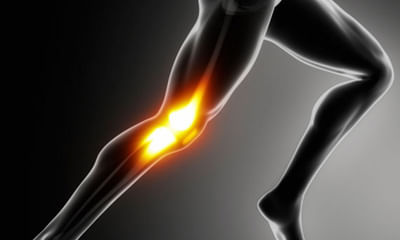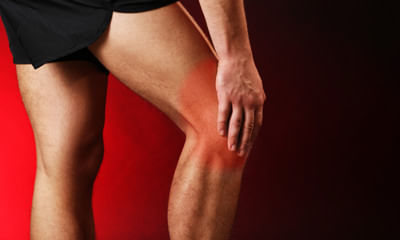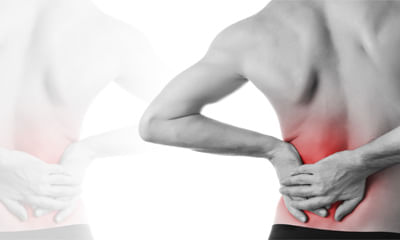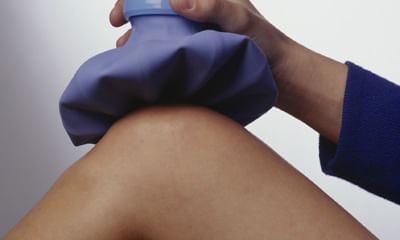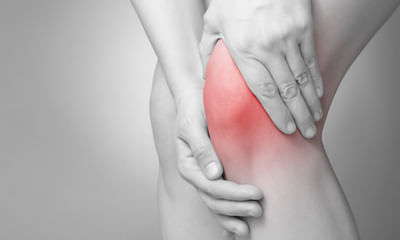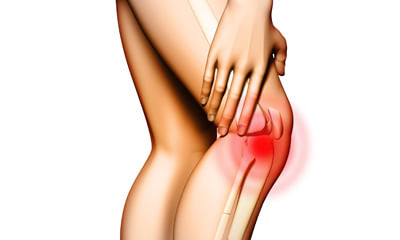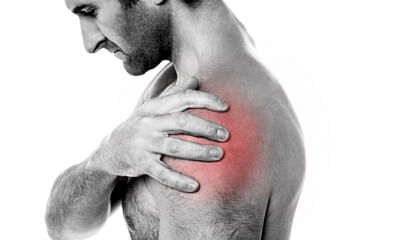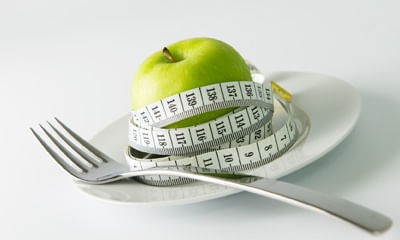Pain Patches For Knee
I have low back pain and knee joints pain last 2 year hlab-27neg, mri was normal (carried out in 2022) esr crp normal. ...
Ask Free Question
Hi lybrate user ,Injuries, poor posture, or arthritis can all cause lower back and knee pain. Lower back pain is a common condition that can make it hard to exercise or perform daily activities. Individuals with lower back pain may put more pressure on their knees to compensate, which can lead to discomfort in the knee joints.The most common back ailments that cause pain in the knees are related to the sciatic nerve. If you have back pain and feel a shooting sensation originating from your lower back running down your leg and through your knee, your sciatic nerve is to blame. regards
Hello. My calves of both the legs are paining since 4-5 days. No injury nothing. It pains from below the knee to ankle. ...
Ask Free Question
Counslt to physio do streching of gastrosoleus drink much water wear soft sole shoes can go for x ray of feet for spur and uric acid test.
I am 23 years old l. I have lower back pain from 1 year. And recently my shoulders are uneven from 2 months. I go to gym ...
Ask Free Question
Sit on an upright bench, like one you'd use for a shoulder press. Holding a dumbbell in your right hand, place your left hand under your left butt cheek and grab the side of the seat. Let your right hand hang down straight by your side and pull your shoulder blades back and together. Now raise your right shoulder up towards your ear-raise it straight up instead of rolling yourshoulder. Hold for a beat at the top, and then return to the start position. Complete a set of 10, and repeat on the other side. Knee pain. If you are overweight, losing weight will also help to reduce pressure on your knee.•mobility exercises rest. Avoid doing things that require you to bend at the hip or put a lot of pressure on the hip. Avoid sleeping on the side of your hip that is painful and sitting for long periods of time •cold and heat. Treating pain with heat and cold may help. Wrap an ice pack or a bag of frozen vegetables in a towel to ice your hip. A warm bath or shower may also help reduce your pain and prepare your muscles for stretching. •stretch. Gently stretching your body may reduce hip pain, especially if the cause is a strain or pinched nerve.
I have an injury on my left knee as I slipped on the road. I have used boroline cream. Please suggest the best treatment ...
Ask Free Question
The rice method rice stands for rest, ice, compression, and elevation. Rest. Avoid putting weight on the painful knee. Ice. Use cold packs for 20 minutes at a time, several times a day. Do not apply ice directly on skin. Compression. To prevent additional swelling, lightly wrap the knee in an elastic bandage, leaving a hole in the area of the kneecap. Make sure that the bandage fits snugly and does not cause additional pain. Elevation. As often as possible, rest with your knee raised up higher than your heart. Medication non-steroidal anti-inflammatory drugs (nsaids) such as ibuprofen and naproxen can help reduce swelling and relieve pain. If you pain persists or it becomes more difficult to move your knee, contact your doctor for a thorough evaluation. Prevention quad extension exercise leg extension exercises help to strengthen and stretch the quadriceps, the muscles in the front of the thigh.
There is a female of around 40 years she has heel pain (pricking pain) since two months what is the best treatment to gi ...
Ask Free Question
Minutes at a time. This is especially beneficial at the end of a long day or when you’ve spent a lot of time on your feet. Or, roll a frozen water bottle under your foot. This method incorporates a bit of massage, relieving tightness in the bottom of your foot. Massage. Massaging the arch of your foot helps to relieve pain and promote mobility. Use your fingers and knuckles to deeply massage your foot for 1 to 5 minutes at a time. One technique is to place both thumbs at the center line of your arch and move them to the outer edges of your feet. Inserts. Use cushion inserts in your shoes for additional support and cushioning. Inexpensive options can be purchased off the shelf. Wear supportive shoes with thicker soles and extra cushioning for additional support that can help to reduce tension in the plantar fascia. Kinesiology tape can be used to improve arch and heel support. Night splints. Many people find quick and effective results by using night splints. They can be worn while sleeping to stretch the plantar fascia. They help to keep the plantar fascia relaxed and prevent you from pointing your feet down. Exercise foot flex use your hand to pull your toes back toward your shin. Hold this position for about 30 seconds .do each side two to three times. Toe towel grab place a small towel under your foot. Curl your toes to grip the towel. Raise the front of your foot off the floor. Hold this position for a few seconds. Release the towel as you lift up your toes and spread them as far apart as possible. Heel and calf stretch to do this stretch: 1.stand facing a wall. 2.place your hands on the wall and move one foot back as far as you can comfortably. Toes on both feet should be facing forward, heels flat, with a slight bend in your knees. 3.lean into the stretch and hold for 30 seconds. You should feel the stretch in your back leg. 4.change legs and repeat. 5.do this stretch twice for both legs. Golf ball roll roll a golf baell under your right foot. Continue for up to 1 minute. Do each foot two to three times.
My right knee is swollen and it got fluid inside it. It's been 4 months when I first consulted with a doctor, took his m ...
Ask Free Question
Knee pain the importance of buying braces and splints from us – orthopaedic support braces we suggest you to wear knee brace which is available at our clinic. If you want you can buy from us, if you are far away from chennai we can send you by courier. The reason why we are conveying you to buy from us is we can demonstrate over the videocall (using whatsapp) and also we can monitor you throughout when to wear it and how long to wear it. And also if you find any difficulty wearing the brace you can also revert back to us for few more suggestions and we can propose you good solution how to go about it. Resisted terminal knee extension: make a loop with a piece of elastic tubing by tying a knot in both ends. Close the knot in a door at knee height. Step into the loop with your injured leg so the tubing is around the back of your knee. Lift the other foot off the ground and hold onto a chair for balance, if needed. Bend the knee with tubing about 45 degrees. Slowly straighten your leg, keeping your thigh muscle tight as you do this. Repeat 15 times. Do 2 sets of 15. If you need an easier way to do this, stand on both legs for better support while you do the exercise. Standing calf stretch: stand facing a wall with your hands on the wall at about eye level. Keep as arthritis is very common that you get generally bilaterally. Ice therapy would definitely help to reduce the inflammation. We also advise you to use knee cap which would help to prevent the knee from damaging further and also to maintain the quadriceps muscle tone 1. Heel and calf stretch 2. Quadriceps stretch to do this stretch: 1. Stand next to a wall or use a chair for support. Your feet should be shoulder-width apart. 2. Bend one knee so your foot goes up toward your glutes. 3. Grab your ankle and gently pull it toward your glutes as far as you can comfortably. 4. Hold for 30 seconds. 5. Return to the starting position and change legs. 6. Repeat 2 times on each side. Knee pain: resisted terminal knee extension: make a loop with a piece of elastic tubing by tying a knot in both ends. Close the knot in a door at knee height. Step into the loop with your injured leg so the tubing is around the back of your knee. Lift the other foot off the ground and hold onto a chair for balance, if needed. Bend the knee with tubing about 45 degrees. Slowly straighten your leg, keeping your thigh muscle tight as you do this. Repeat 15 times. Do 2 sets of 15. If you need an easier way to do this, stand on both legs for better support while you do the exercise. Standing calf stretch: stand facing a wall with your hands on the wall at about eye level. Keep as arthritis is very common that you get generally bilaterally. Ice therapy would definitely help to reduce the inflammation. We also advise you to use knee cap which would help to prevent the knee from damaging further and also to maintain the quadriceps muscle tone ice therapy would definitely help to reduce the inflammation. We also advise you to use knee cap which would help to prevent the knee from damaging further and also to maintain the quadriceps muscle tone. Stiffness have developed due to weakness of the ligaments &inflammed cartilage. Specific knee exercises will also help ie. Keeping ball underneath the knee and keep pressing it. That's the simple exercise which will help you to strengthen the knee.
I am 42 years old .now days I am getting some knee pain when I am sitting down or standing up, some time it pain and som ...
Ask Free Question
We do not prescribe medicines as we are physiotherapists if you want we can give you suggestions to address your knee pain. Knee pain this is a general knee pain and for this you can follow these measures: one keep a pillow right under the knee while sleeping, next is you can keep ice in the painful area for about 5--10 minutes, it looks like you are is important to check that. Anaemia always leads to the symptoms of being tired and also having body pain though there may not be any pathological reasons for knee pain. With knee exercises you will definitely feel better and muscles must be strengthened .•don't play through pain. As soon as you notice exercise-related knee pain, ice the area and rest. Until your knee is pain-free, avoid activities that put stress on your patellar tendon. •strengthen your muscles. Strong thigh muscles are better able to handle the stresses that can cause patellar tendinitis. Eccentric exercises, which involve lowering your leg very slowly after extending your knee, are particularly helpful. •improve your technique. To be sure you're using your body correctly, consider taking lessons or getting professional instructions when starting a new sport or using exercise equipment. •therapy •a variety of physical therapy techniques can help reduce the symptoms associated with patellar tendinitis, includingback pain it looks like you are anaemic. If you have back pain after you sit for long hours then it is due to your haemoglobin levels as it is important to check that. Anaemia always leads to the symptoms of being tired and also having back / leg pain though there may not be any pathological reasons for back pain. It looks like you are anaemic. And also you have to check with your vitamin and calcium, if the bones are weak then automatically the pain gets triggered more as there is less severity of the painbe strengthened 1.resisted terminal knee extension: make a loop with a piece of elastic tubing by tying a knot in both ends. Close the knot in a door at knee height. Step into the loop with your injured leg so the tubing is around the back of your knee. Lift the other foot off the ground and hold onto a chair for balance, if needed. Bend the knee with tubing about 45 degrees. Slowly straighten your leg, keeping your thigh muscle tight as you do this. Repeat 15 times. Do 2 sets of 15. If you need an easier way to do this, stand on both legs for better support while you do the exercise. 2•standing calf stretch: stand facing a wall with your hands on the wall at about eye level. Keep as arthritis is very common that you get generally bilaterally. Ice therapy would definitely help to reduce the inflammation. We also advise you to use knee cap which would help to prevent the knee from damaging further and also to maintain the quadriceps muscle tone •stretching exercises. Regular, steady stretching exercises can reduce muscle spasm and help lengthen the muscle-tendon unit. Don't bounce during your stretch. 3•strengthening exercises. Weak thigh muscles contribute to the strain on your patellar tendon. Exercises that involve lowering your leg very slowly after extending it can be particularly helpful, as can exercises that strengthen all of the leg muscles in combination, such as a leg press.•this is a general knee pain and for this you can follow these measures: one keep a pillow right under the knee while sleeping, next is you can keep ice in the painful area for about 5--10 minutes, it looks like you are is important to check that. Anaemia always leads to the symptoms of being tired and also having body pain though there may not be any pathological reasons for knee pain. With knee exercises you will definitely feel better and muscles must be strengthened.
Im a footballer who got a meniscus tear and got recovered has pain when I bends my right knee but without having the bod ...
Ask Free Question
You may still be experiencing some residual issues related to your meniscus tear, even though you have recovered from the initial injury. The specific symptoms you described, such as pain when bending the knee while sitting and needing to tighten your calf to feel the pain, suggest that there may be ongoing irritation or inflammation in the knee joint. One possibility is that you could be experiencing a condition called "meniscal irritation" or "meniscal impingement. This occurs when the torn edge of the meniscus rubs against other structures in the knee joint, causing pain and discomfort, particularly during activities that involve bending the knee. Another possibility is that you may have developed some scar tissue or adhesions in the knee joint as a result of the initial injury and subsequent healing process. This scar tissue can sometimes cause stiffness and discomfort, especially with certain movements like bending the knee while sitting. It's important to have your knee evaluated by a healthcare professional, preferably one specializing in sports medicine or orthopedics. They can perform a thorough examination, possibly including imaging studies like an mri, to determine the exact cause of your symptoms and recommend an appropriate treatment plan. This may include physical therapy to improve flexibility and strength, specific exercises to address any imbalances or weaknesses, and possibly further interventions such as injections or, in some cases, surgery to address any ongoing issues with the meniscus or other structures in the knee joint.
I have severe shin pain while running and minor pain in calfs when I walk. From past one month I am having pain in my le ...
Ask Free Question
It looks like you have vitamin d deficiency and anaemia. You need to improve the tone of the muscles in a rhythmical manner. If you do that with proper diet restriction nothing will happen to you. Shin pain after walking or running and minor pain in the calf muscles while walking is due to the low iron in the body. You need to take iron tablets or you can consume good diet for you to feel better.
I'm over 53 with 74 kg weight with 153 cm height having asthma and now there is lot of pain in my knees doctors says the ...
Ask Free Question
Here are some general dietary tips that may be beneficial: maintain a balanced diet: focus on consuming a variety of nutrient-dense foods such as fruits, vegetables, whole grains, lean proteins (like poultry, fish, tofu, legumes), and healthy fats (such as avocados, nuts, seeds, and olive oil). Stay hydrated: drink plenty of water throughout the day to keep your joints lubricated and to help with weight loss. Control portion sizes: be mindful of portion sizes to avoid overeating, which can contribute to weight gain. Using smaller plates and bowls can help with portion control. Limit processed foods: minimize your intake of processed foods, sugary snacks, and beverages high in added sugars, as they can contribute to inflammation and weight gain. Incorporate omega-3 fatty acids: include sources of omega-3 fatty acids in your diet, such as fatty fish (salmon, mackerel, sardines), flaxseeds, chia seeds, and walnuts. Omega-3s have anti-inflammatory properties that may help reduce inflammation in the body, including the joints. Increase fiber intake: fiber-rich foods like fruits, vegetables, whole grains, and legumes can help you feel full and satisfied, which may aid in weight management. Additionally, fiber can help regulate blood sugar levels and improve digestion. Consider anti-inflammatory foods: some foods have anti-inflammatory properties that may help reduce inflammation in the body. These include berries, cherries, turmeric, ginger, green tea, and olive oil. Limit sodium intake: excess sodium can contribute to fluid retention and may exacerbate swelling in the joints. Aim to limit your intake of processed foods, canned soups, and salty snacks. Consult with a registered dietitian: consider working with a registered dietitian who can create a personalized meal plan tailored to your specific health needs, including your asthma and knee problems.


